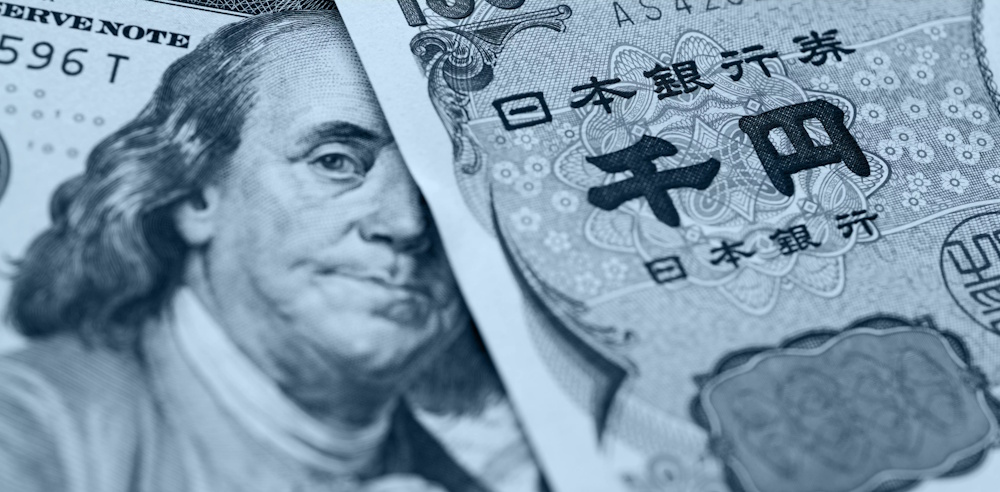The USD/JPY pair declined beneath 147.00, reaching two-week lows around 146.60, as widespread U.S. Dollar weakness affected global markets. The recent correction is a response to the underwhelming payroll data, which revealed a 32K job decline in September, contrary to the anticipated 50K increase. Additionally, August’s figures were sharply revised downward from +54K to a 3K loss. The soft labor picture has heightened expectations for a Federal Reserve rate cut in October, now fully priced at 100%, while the likelihood of an additional cut in December has increased to 86% from 60% just a week prior. The U.S. government shutdown and diminishing fiscal momentum are contributing additional challenges to the outlook for the dollar, intensifying pressure on dollar pairs such as USD/JPY, which is currently probing the lower boundary of its critical short-term range.
Market pricing indicates increasing concern regarding the independence of the Federal Reserve, as the Trump administration contemplates changes to its key governors. The possible removal of Lisa Cook from the Fed Board, along with speculation regarding Chair Jerome Powell’s tenure post-May, has raised concerns about a dovish bias, which could undermine the policy credibility that has bolstered the dollar through the middle of the year. Current swaps indicate a projection of 100 basis points in cuts by July 2026, with an anticipated front-loading through two 25-basis-point adjustments prior to the end of the year. In addition to rate speculation, fiscal instability stemming from the shutdown and increasing Treasury issuance costs have constrained liquidity and weakened the dollar’s strength. This has disrupted the historical correlation between USD/JPY and U.S. yields, a relationship that was already strained earlier this year due to the “Sell America” incident following the Liberation Day tariffs. The Japanese yen continues to be supported by the Bank of Japan’s hawkish policy shift on the other side of the trade. The recent Summary of Opinions indicated that certain board members supported a rate hike as soon as October, a rare position during Governor Ueda’s tenure. The probability of a 25-basis-point increase has risen to 80% for November and is almost entirely accounted for in January 2026 pricing. The inflation momentum observed in Tokyo CPI readings, coupled with steady wage growth and increased household consumption, has bolstered the argument for a gradual normalization process.
The upcoming leadership election of the Liberal Democratic Party may solidify existing policies, with leading candidate Sanae Takaichi indicating a willingness to accept slight rate hikes to safeguard purchasing power. The current dynamics position the yen as a unique safe-haven option during global easing cycles, leading to increased inflows into short-term JPY assets. From a technical perspective, USD/JPY has formed a double-bottom pattern around 146.50, indicating interim support following multiple unsuccessful attempts to break through the 151.00 resistance level since April. The average true range has narrowed to 109 pips, a decrease from the 90-day average of 126 pips, indicating a compression of volatility ahead of a potential breakout. The RSI is currently oscillating around 52, indicating a neutral momentum with a slight bullish inclination. Meanwhile, the MACD has crossed the signal line from below, suggesting the potential for early accumulation. A consistent movement beyond 147.73, which represents the immediate slope resistance, would aim for the 1.618 Fibonacci projection at 147.84, subsequently targeting 148.90 and 150.25. On the other hand, a failure to maintain support at 146.40 could lead to a more significant retracement toward 142.50 and 140.25, which are associated with the 2025 trendline base.
The historical correlation between the pair and Treasury yields experienced a decline earlier in 2025, but it is currently showing signs of gradual recovery. Ten-year yields are currently at approximately 3.88%, a decrease from 4.21% in August, resulting in a compression of the interest rate differential with Japan to about 370 basis points, marking the tightest spread since early 2023. This narrowing diminishes the attractiveness of carry trades that had supported the strength of the dollar. The S&P 500 VIX index stands at 16.6, indicating a low-volatility environment that restricts the need for dollar hedges. With yen funding costs on the rise, speculative investors are reversing risk-sensitive carry trades, leading USD/JPY to transition into a more rates-sensitive environment instead of adhering strictly to a risk-on/risk-off correlation. The structural change has intensified price responses to labor data and rate expectations, rather than to fluctuations in equity or volatility.

